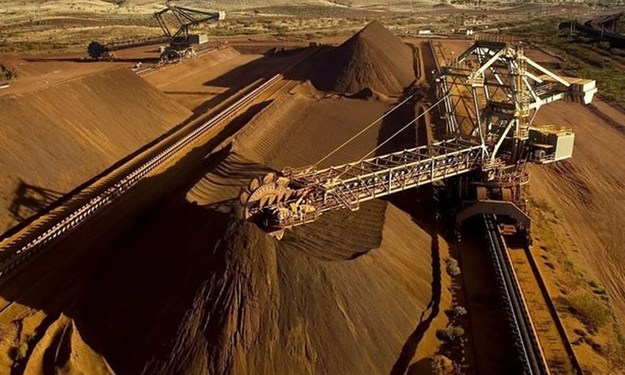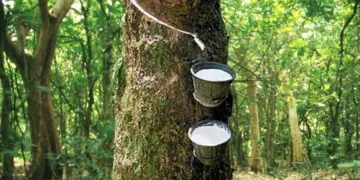Rubber trees are typical of tropical crops, natural rubber and its products is an important industrial raw materials. The world’s natural rubber production mainly in tropical countries and regions near the equator, where the Southeast Asia production accounted for more than 80% of world production. China is the world’s third largest rubber plantations, is also the largest natural rubber importer and consumer. In recent years, affected by many factors, the increase in the international natural rubber market instability, price volatility, severely affecting the world’s natural rubber consumption and production, nor conducive to the stable development of China’s natural rubber industry.
Rubber price “roller coaster” why oversupply phenomenon?
First, let’s look at some numbers: natural rubber prices, January 1, 2011 was 36,000 yuan / ton, enter the end of January 2011 until the end of February, there were short-term “surge”, priced over 40,000 yuan, up to 42250 Yuan. Thereafter he began to fall, to October 18 this year, below 30,000 yuan, which is no longer able to pick up later, all the way down until the current yuan from top to bottom. December 1 last year, the latest offer is about 12,000 yuan. Compared to February 2011, domestic natural rubber prices fell by 30,000 yuan, a large historical declines of rare.
The root cause of natural rubber price volatility is due to the classical laws of the market economy, that is an oversupply. However, the specific reasons for the oversupply of natural rubber lie? Can be resolved from the following two aspects –
First, China’s natural rubber supply source
1, foreign imports
Based on the special geographical habits rubber trees, our country suitable for growing rubber land area is limited, despite generations of efforts to achieve the promotion of rubber trees, but taking into account economic and social factors, under the limited suitable land area, rubber plantation area more It is limited. Therefore, China’s natural rubber imports can not be separated, imports over 60%. China is the world’s largest consumer of rubber, imports accounted for a third of the world’s total consumption of rubber.
According to customs statistics, in 2011 China’s total import volume of 2.956 million tons of natural rubber. 2012 China’s imports of natural rubber more substantial growth, reaching 3.279 million tons. In 2013 the country imported 2.47 million tons of natural rubber in 2014 China’s natural rubber imports 4.21 million tons, an increase of 5.5%. With the slowdown in China’s economic growth, the global economic downturn and the impact of trade policy market, the future is very difficult to return to the natural rubber imports in the early momentum of rapid growth, slow growth or even decline is very likely.
2, the domestic production
China’s natural rubber output in 2011 was 72.7 million tons, in 2012 China’s natural rubber output 795,000 tons; 2013 annual cumulative production of natural rubber is about 836,000 tons; the rubber prices all the way down, 2014 rubber plantation area will cut the actual opening a serious shortage of domestic natural rubber output of about 74-78 million tons, down 9.3% -13.9%. Nevertheless, the future of China’s natural rubber production will continue to rise, is expected to 2020, China’s production of natural rubber and controlled resources will reach 3.2 million tons, eventually up to 400 tons.
3, to the period of the inventory
China’s natural rubber stocks from the point of view, 1999 to the beginning of this century, China’s natural rubber stock average is 5.9 million tonnes. 2011 inventory reached 570,700 tons in 2012 to 534,300 tons in 2013 to 592,000 tons. Natural rubber production this year are also expected surplus of about 930,000 tons.
Second, China’s natural rubber oversupply
Difficult to see from the above analysis of the facts, the amount of natural rubber has higher consumption of natural rubber in a state of oversupply. And this state is not unique to our country. According to Association of Natural Rubber Producing Countries (ANRPC) report released over the years, the Association of Member States, the main producing countries and consuming countries continued to increase consumer downturn, coupled with the global economic downturn trend, rubber plantations produce large initial investment, the difficulties of transition, the future of the world’s natural Rubber oversupply may be difficult to improve in the short term.
1, a large number of producing countries replanting of rubber trees
Many scholars in empirical research found that international natural rubber prices is the most important factor in domestic natural rubber price fluctuations. Analyze the reasons for the root causes of international natural rubber price fluctuations will find a natural rubber price fluctuations of the fuse.
Bring internal competition (1) production growth. 2005–2008 years, all the world’s rubber plantation country’s vast replanting of new rubber trees, rubber trees on average 6–7 years to calculate normal tapping, 2011–2015 years, the world’s natural rubber supply will be concentrated market. Plus less frequent since 2008 large-scale natural disasters, rubber tree production increased security, the main producing areas of the world’s major rubber producing areas led to internal competition between the formation of natural rubber prices will become reasonable.
(2) Production lack of price elasticity of supply. Because of the growth of life long before the normal tapping rubber trees once put into operation, the production of rubber farmers shift direction becomes more difficult, a huge upfront investment cost has forced the rubber farmers can continue to produce. Under this cycle, the international natural rubber supply inelastic market mechanism blocked.
Inadequate (3) producing countries, regulatory capacity. The world’s major producing countries of Thailand, Indonesia, Malaysia and Vietnam, the planting area of more than 90% of the world’s total cultivated area, yield more than 60%. These countries have an internal political instability, lack of effective market regulation capacity, it is not enough regulation of the financial strength of natural rubber prices, natural rubber market failures can only be taken to limit simple cut, measures to restrict exports.
2, China’s imports of natural rubber lack of scientific budget
There is no doubt that the market demand is the fundamental decision goods imports. How much a country imports from the production sector is expected to decide on market demand. Imports of natural rubber is no exception. However, natural rubber imports in our country is the lack of science budget, reflected in the following aspects.
(1) Beginning inventory is too high. As already mentioned China’s natural rubber stocks, by contrast found that stocks 570,700 tons in 2011, when imports were 2.956 million tons, both compared to the year when the stock accounted for 19.3 per cent of imports, in 2012 this figure was 16.3%.If the stock of 930,000 tons this year, according to calculations, if the imports can not be adjusted, the proportion of stocks in the total import volume will exceed 30%. Such a high inventory ratio, not only can not boost the market price, but also cause significant waste of resources.
(2) Reclamation of adverse selection. In Hainan, Yunnan, Guangdong rubber farm survey found that there Reclamation reporting information through adverse selection situation. As follows: three Land Reclamation in the storm after the purchase of insurance, to pay an annual premium of about 30 million yuan, 30,000 yuan higher prices even at times / ton Jiaojia computing, also equivalent to 1,000 tons of natural rubber prices. To compensate for this expenditure, each Reclamation expect disaster situation has been over-exaggerated subsidies, domestic natural rubber production and therefore false, we recommend countries with large reserves. After the country received this information, but often do not investigate directly imported from foreign countries. During this period, the gap has become a cause cause actual supply of domestic natural rubber is much higher than the actual demand, which will inevitably lead to domestic natural rubber prices slump.
(3) weak downstream demand of natural rubber. Natural rubber tire industry major downstream industries. From the export point of view, the situation is very grim. In recent years, the domestic tire exports often restricted, only in 2014 on the series suffered in July and mid-November, two pairs of counter attack. On the one hand, overheated investment in previous years, the tire export has become the only way to survival, competition leads to tire product quality varies greatly, and the export profits; on the other hand, international trade, environmental degradation lead to tire export situation worse. Chinese enterprises often encounter foreign trade protection policy, labeling laws from Europe, the US special protective case, to Brazil, India and other regions of the anti-dumping and so on. Domestic rubber industry suffer, lower tire export restrictions, weakening external demand, followed by rubber consumption slump. From a tire point of view of domestic demand, play a major role in the automotive production. According to the China Association of Automobile Manufacturers statistics, in 2013 the annual total production of automotive 22,116,800, an increase of 14.76%, car sales 21,984,100, an increase of 13.87 percent, compared with 2012 sales year on year growth rate increased by 10.2 and 9.6 percentage points . But this growth is not enough to shake gently on the market price of natural rubber.
(4) Alternative extrusion market space. Rubber Products With the continuous improvement process, the selection of raw materials also vary, many products have been done using a synthetic rubber to replace natural rubber. Wherein the isoprene rubber and natural attributes most similar almost can replace natural rubber. With the continuous development of synthetic rubber industry, the prices are more competitive. When the natural rubber supply tight or prices, many manufacturers will choose to use synthetic rubber, both will be increasingly strong complementarity. Because of this, isoprene rubber production capacity in recent years has been the rapid development of the natural rubber squeeze the living space.
Again net reference point: For Chinese natural rubber prices, it is difficult to improve somewhat in the short term, mainly due to China’s natural rubber closer exacerbate the oversupply situation: Currently the entire Southeast Asian region are in the tapping of natural rubber supply to increase the amount ; US “double reverse” effect has not yet subsided, South Africa also pointed out that Chinese tire dumping sign, for restricted Chinese tire exports to the tire industry is undoubtedly worse. Tire industry downturn resulting in reduced demand for natural rubber. Seen in this light Chinese natural rubber prices unlikely to increase in the short term there is even likely to continue to decline.
Translated by Google Translator from http://market.cria.org.cn/25/28026.html

























